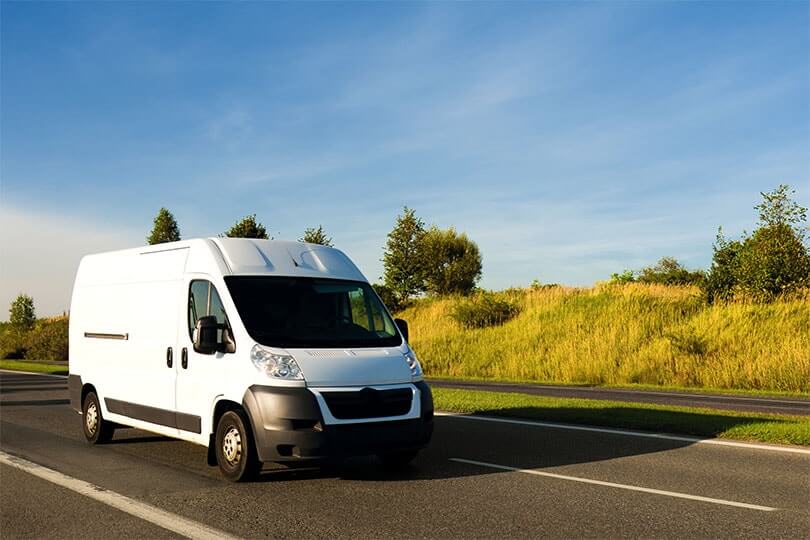Driving is the most dangerous activity most of us do regularly. In 2019 there were 1,725 fatalities on the UK’s roads and 25,945 people seriously injured following a road traffic accident.
A HSE road safety task force estimates that between a quarter and a third of all road traffic accidents involve somebody who is at work.
Looking at the two previous statements, it is easy to see that driving at work can present a significant risk and employers need to manage work related road safety just as they would any other hazard in the workplace.
So, what do you need to know about managing work-related road risks in your business?
When is somebody considered to be driving at work?
If you are doing your regular commute from home to your usual place of work (or back again) then you are not driving for work. You are considered to be driving for work if you are travelling from home to somewhere which is not your usual place of work or if you are driving for the purposes of carrying out your job role (e.g. to meet a client, to deliver some documents, to attend a conference, etc.).

Does Health and Safety Law apply to driving at work?
Yes. While Road Traffic Law will continue to be applicable and the Police would lead of any accident investigations, Health and Safety Law applies where journeys are being undertaken as part of a job role.
Road Traffic Law focuses on individual driver behaviours, but employers could still be prosecuted if they ’cause or permit’ road traffic offences such as use of mobile phone while driving, using a vehicle in dangerous conditions, permitting somebody to drive without license and / or insurance.
Health and Safety Law focuses more on the systems in place to manage the risk associated with driving. Under Health and Safety law you must ensure that your employees and other road users are not put at risk by your work-related activities. This means putting risk assessments and reasonable controls in place to protect your workers and any other road users from harm.
Breaching Health and Safety Law or Road Traffic Law can result in individual consequences such as fines, penalties, disqualifications and imprisonment; Managers could be convicted of Health and Safety offences potentially resulting in high fines or imprisonment; and organisations could be convicted of Corporate Manslaughter.
Does this only apply to company vehicles?
No. You need to proactively manage work-related road safety for all road journeys taken as part of your organisations work. This might be in vehicles owned by the organisation, leased vehicles or employees using their own vehicles (the so called ‘grey fleet’).
What sort of things need to be considered when managing work-related road risk?
There are three main areas to look at when assessing road risk and putting controls in place. These are drivers, vehicles, and journeys. Some of the things to think about are:
Driver
- Do your drivers have a valid driving license and suitable insurance?
- Do your drivers understand your organisations expectations about driving safely? Do you have a driving policy to share with them?
- Are your drivers fit to drive? Consider long-term or temporary impairments such as illness, fatigue and use of alcohol and drugs.
- Can your drivers focus on driving? Make sure your drivers have no distractions when driving, and they must not use a handheld mobile while driving. Make sure that managers understand they must not expect their drivers to pick up call or messages when driving.
- Do your drivers need additional driver training? Advanced driving courses may be beneficial for high-mileage drivers.
- Do your drivers understand what they must do in the event of an emergency such as accident or breakdown?
Vehicles
- Do you set minimum specifications for vehicles? Do you insist on primary safety features such as Electronic Stability Control (ECS) and Automatic Braking Systems (ABS)? Do you set a minimum Euro NCAP rating?
- Do you make sure privately owned vehicles are insured for business use and have a valid MOT (if required) before they are used for work-related road activities?
- Do you have a system to ensure company owned vehicles are serviced and MOT’d when required?
- Do your drivers know how to conduct vehicle safety checks, and what they need to check before each journey?
Journey
- Do you plan your journeys to keep milage as low as possible?
- Do you use safer routes? Motorways are statistically the safest roads, and some minor roads might cause difficulties for larger vehicles.
- Do you try to avoid rush hour, as far as possible?
- Do you plan plenty of rest breaks and take into account times when drivers are most likely to feel sleepy (between 2am – 6am and between 2pm – 4pm)?
- Do you take adverse weather conditions into account (like high winds, snow and ice) when planning journeys?

What do I need to do to manage work-related road safety in my organisation?
Like any other work-related risk management, the HSE recommends following the Plan, Do, Check, Act cycle for managing work-related road risk. This means setting a driving policy, carrying out risk assessments, putting controls in place, consulting with your drivers, investigating any accidents or incidents, regularly checking your controls are working and acting on the findings of those checks.
The HSE and RoSPA have both produced guidance for managing work-related road risk. These are:
HSE Driving and riding safely for work
RoSPA – An Introduction to Managing Occupational Road Risk.
If you want to know more about managing work-related road safety in your organisation then lets have a chat.

